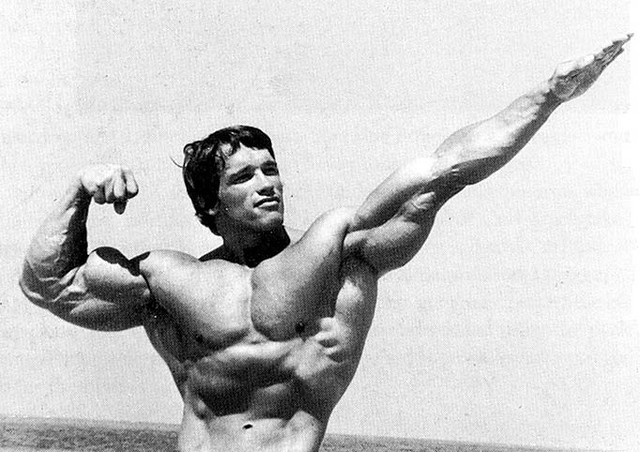
Lifting weights and using machines in the gym is the most common form of resistance training. As such, whether due to boredom or trying to get an edge on the competition, people will sometimes look to alternative forms to supplement their workouts.
Arnold Schwarzenegger, in the bodybuilding movie Pumping Iron, famously would flex his muscles in the mirror in between sets of exercises.
While some attribute this as nothing more than posing practice, some wonder if there was more to it. Many bodybuilders in the 1970’s, sometimes called the golden generation, were ahead of their time in terms of muscle building tactics.
Back then the scientific research was limited, and while some of the practices are outdated, many of the things they did were efficient in building muscle. Bodybuilders during that era seemed to have an intuition as to how to build muscle.
Muscle is built from mechanical tension, no matter what form it is. So long as there is enough tension, simply flexing muscles would stimulate growth despite being an unorthodox method.
Muscles grow when a stress is placed upon it. The stress has to be great enough that the muscle has to adapt and grow larger and stronger. Part of the reason people see a plateau in muscle growth is because their workouts are no longer challenging enough to elicit this response.
You can’t expect to build muscle by doing the same thing over and over. Technically speaking, flexing would improve upon an already existing routine that has gone stale. While the workout volume (sets, reps, and weight lifted) did not really change, flexing added additional strain on the muscle.

Flexing Muscles Benefits
Flexing muscles in between sets of exercise has the potential to stimulate more muscle fibers than resistance training alone. It is also a unique way to take a muscle to failure.
Rather than using forced reps (i.e. having a partner help you lift the weight), flexing a fatigued muscle is a more effective way to maintain tension on the muscle itself. It could potentially bring more blood to the working muscle as well.
Flexing muscles is an isometric exercise in of itself. An isometric exercise is one which places tension on the muscle without movement. Examples include planks, wall sits, and stomach vacuums.
Flexing can also help bring up a lagging body part. Nearly everyone can attest to having muscle groups that grow easily and ones that they struggle with. Part of the reason is their inability to feel the muscle working.
Flexing the same muscle group immediately after an exercise can achieve growth. For example, performing a side chest pose after a set of bench presses. The mind muscle connection is a real phenomenon in fitness, and this practice can help you feel the muscles working when you return to the exercise itself.
The other benefit is that, with enough practice, you can learn to flex every major muscle group in the body. This is what bodybuilding is all about; showcasing the best physique. Bodybuilders go on stage and flex to show off lean muscle mass and differentiate from the competition.
Make no mistake, flexing for long periods is not easy. Ask any bodybuilder who has attended a posing class how they feel afterwards. If you’ve ever been to a bodybuilding show, the judges will often give the participants a verbal cue to “relax” in between poses because they know how exhausting it can be.
If you can get past the feelings of self consciousness (if you have them), or better yet if you work out alone at home, flexing between sets is a great supplement to an existing training routine.
With that said, optimal muscle growth occurs during an exercise performed with a full range of motion. The flexing of muscle should be considered a supplementation to a normal resistance training workout program.
Recent Posts
There is no greater appeal in the fitness world than the prospect of eating junk food and still effectively building muscle. With how calorie dense fast food is, coupled with the lack of...
Despite being a niche sport, the goal of becoming a professional bodybuilder still appeals to many people. The popularity of pro bodybuilding has waned since the days of Ronnie Coleman and Jay...
